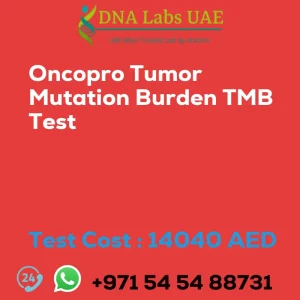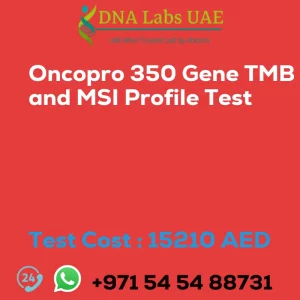IMMUNOHISTOCHEMISTRY LUTEINIZING HORMONE LH Test
Test Cost: AED 470.0
Overview
The IMMUNOHISTOCHEMISTRY LUTEINIZING HORMONE (LH) Test is a diagnostic test used to detect and localize LH in tissue samples. This test is commonly performed in cancer patients and is used to study LH expression in various tissues.
Test Components
- Price: AED 470.0
- Sample Condition: Submit tumor tissue in 10% Formal-saline OR Formalin fixed paraffin embedded block. Ship at room temperature. Provide a copy of the Histopathology report, Site of biopsy and Clinical history.
- Report Delivery: Sample Daily by 6 pm; Report Block: 5 days Tissue Biopsy: 5 days Tissue large complex: 7 days
- Method: Immunohistochemistry
- Test type: Cancer
- Doctor: Oncologist, Pathologist
- Test Department: HISTOLOGY
Pre Test Information
Before performing the IMMUNOHISTOCHEMISTRY LUTEINIZING HORMONE LH Test, it is important to provide a copy of the Histopathology report, Site of biopsy, and Clinical history.
Test Details
Immunohistochemistry (IHC) is a technique used to detect specific proteins in tissue sections using antibodies. In the case of the LH test, IHC is used to detect the presence and localization of LH in tissue samples.
The LH IHC test involves the following steps:
- Tissue sample preparation: Tissue sections are obtained from the area of interest, usually through biopsy or surgical resection. The tissue is then fixed and embedded in a paraffin block.
- Deparaffinization and rehydration: The paraffin-embedded tissue sections are deparaffinized using xylene and rehydrated using a series of graded alcohols.
- Antigen retrieval: The tissue sections are subjected to antigen retrieval to unmask the epitopes and enhance antibody binding. This can be achieved through heat-induced epitope retrieval (HIER) methods or enzymatic digestion.
- Blocking: Non-specific binding sites on the tissue sections are blocked using a blocking solution, such as serum or protein-based blocking reagents.
- Primary antibody incubation: The tissue sections are incubated with a primary antibody specific to LH. The primary antibody binds to the LH protein if present in the tissue sections.
- Secondary antibody incubation: After washing off unbound primary antibody, the tissue sections are incubated with a secondary antibody conjugated to a detection molecule, such as an enzyme or a fluorophore. The secondary antibody binds to the primary antibody, amplifying the signal.
- Visualization: The detection molecule on the secondary antibody generates a visible signal, which can be visualized using different methods depending on the detection system used.
- Counterstaining: To visualize the tissue morphology, the tissue sections may be counterstained with dyes like hematoxylin or eosin.
- Microscopic analysis: The tissue sections are examined under a microscope to determine the presence and localization of LH. LH-positive cells will show a positive signal, usually in the cytoplasm or cell membrane.
The LH IHC test is commonly used in research and clinical settings to study LH expression in various tissues, such as the pituitary gland, ovaries, and testes. It can provide valuable information about LH production and localization, which can help in understanding the role of LH in normal physiology and disease processes.
| Test Name | IMMUNOHISTOCHEMISTRY LUTEINIZING HORMONE LH Test |
|---|---|
| Components | |
| Price | 470.0 AED |
| Sample Condition | Submit tumor tissue in 10% Formal-saline OR Formalin fixed paraffin embedded block. Ship at room temperature. Provide a copy of the Histopathology report, Site of biopsy and Clinical history. |
| Report Delivery | Sample Daily by 6 pm; Report Block: 5 days Tissue Biopsy: 5 days Tissue large complex : 7 days |
| Method | Immunohistochemistry |
| Test type | Cancer |
| Doctor | Oncologist, Pathologist |
| Test Department: | HISTOLOGY |
| Pre Test Information | Provide a copy of the Histopathology report, Site of biopsy and Clinical history. |
| Test Details |
Immunohistochemistry (IHC) is a technique used to detect specific proteins in tissue sections using antibodies. In the case of the luteinizing hormone (LH) test, IHC can be used to detect the presence and localization of LH in tissue samples. To perform the LH IHC test, the following steps are typically followed: 1. Tissue sample preparation: Tissue sections are obtained from the area of interest, usually through biopsy or surgical resection. The tissue is then fixed and embedded in a paraffin block. 2. Deparaffinization and rehydration: The paraffin-embedded tissue sections are deparaffinized using xylene and rehydrated using a series of graded alcohols. 3. Antigen retrieval: The tissue sections are subjected to antigen retrieval to unmask the epitopes and enhance antibody binding. This can be achieved through heat-induced epitope retrieval (HIER) methods or enzymatic digestion. 4. Blocking: Non-specific binding sites on the tissue sections are blocked using a blocking solution, such as serum or protein-based blocking reagents. 5. Primary antibody incubation: The tissue sections are incubated with a primary antibody specific to LH. The primary antibody binds to the LH protein if present in the tissue sections. 6. Secondary antibody incubation: After washing off unbound primary antibody, the tissue sections are incubated with a secondary antibody conjugated to a detection molecule, such as an enzyme or a fluorophore. The secondary antibody binds to the primary antibody, amplifying the signal. 7. Visualization: The detection molecule on the secondary antibody generates a visible signal, which can be visualized using different methods depending on the detection system used. For example, if an enzyme-conjugated secondary antibody is used, a chromogenic substrate can be added to produce a color change in positive cells. 8. Counterstaining: To visualize the tissue morphology, the tissue sections may be counterstained with dyes like hematoxylin or eosin. 9. Microscopic analysis: The tissue sections are examined under a microscope to determine the presence and localization of LH. LH-positive cells will show a positive signal, usually in the cytoplasm or cell membrane. The LH IHC test is commonly used in research and clinical settings to study LH expression in various tissues, such as the pituitary gland, ovaries, and testes. It can provide valuable information about LH production and localization, which can help in understanding the role of LH in normal physiology and disease processes. |








